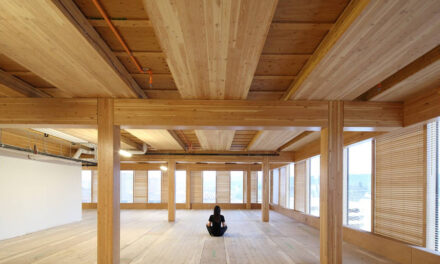There are hundreds of millions of individual buildings in the world, each presenting multiple and diverse energy needs. Even though most countries have introduced policies for reducing greenhouse gas emissions in buildings through measures to improve energy efficiency, these policies have not resulted in a significant reduction in emissions.
Thanks to a new ISO standard, determining and reporting a carbon metric of an existing building, associated with the operation of the building, will become easier and will help reduce greenhouse gas (GHG) emissions.
ISO 16745, Sustainability in buildings and civil engineering works – Carbon metric of an existing building during use stage, Parts 1 and 2, will provide, in a simple way, a set of methods for the calculation, reporting, communication and verification of a collection of carbon metrics for GHG emissions arising from the measured energy use during the activity of an existing building, the measured user-related energy use, and other relevant GHG emissions and removals.
Jacques Lair, Chair of the ISO subcommittee that developed the standard, said: “At a time when global warming is becoming more and more evident, with its devastating effects on the entire planet, having a tool to measure the carbon footprint left by buildings is of utmost importance. ISO 16745 will bring a response to the expectations of all.”
First global tool for measuring the carbon footprint of buildings
Buildings are responsible for more than 40 % of global energy used, and as much as one-third of global GHG emissions, both in developed and developing countries. But the building sector also has the largest potential for significantly reducing GHGs compared to other major emittors.
In this context, measuring and reporting GHG emissions from existing buildings is critical to enable significant and cost-effective GHG mitigation. Until now, there has been no globally agreed method to measure, report and verify potential reductions of GHG emissions from existing buildings in a consistent and comparable way.
There is a need for a metric and ISO 16745 will be very useful, not only in countries with a sufficient number of experts and a precise database, but also in those countries where experts’ services are limited and databases have considerable gaps.
The standard could be used as a universal tool for measuring and reporting GHG emissions, providing the foundation for accurate performance baselines of buildings to be drawn, national targets to be set and carbon trading to occur on a level playing field.
ISO 16745 aims to be practical not only for the building profession, but for many stakeholders who are expected to use the carbon metric of a building as reference for decision making in their business activities, governmental policies and as a baseline for benchmarking. The simplicity of its approach means it is applicable at all scales, from cities and building portfolios to individual buildings.
ISO 16745 was developed by technical committee ISO/TC 59, Buildings and civil engineering works, subcommittee SC 17, Sustainability in buildings and civil engineering works, whose secretariat is held by AFNOR, the ISO member for France. It is available from your national ISO member or through the ISO Store.





